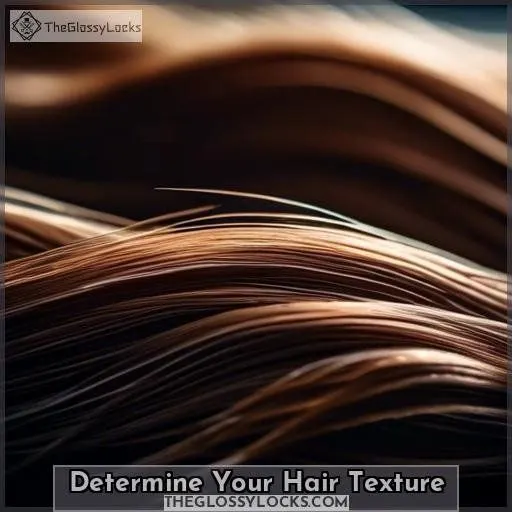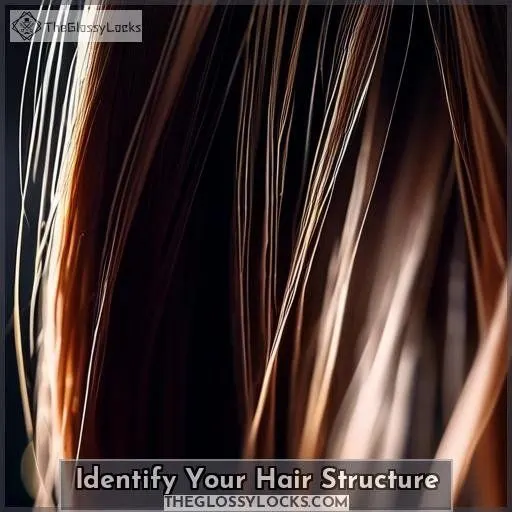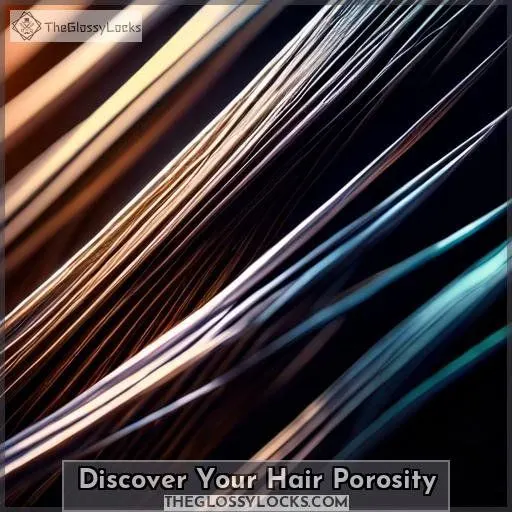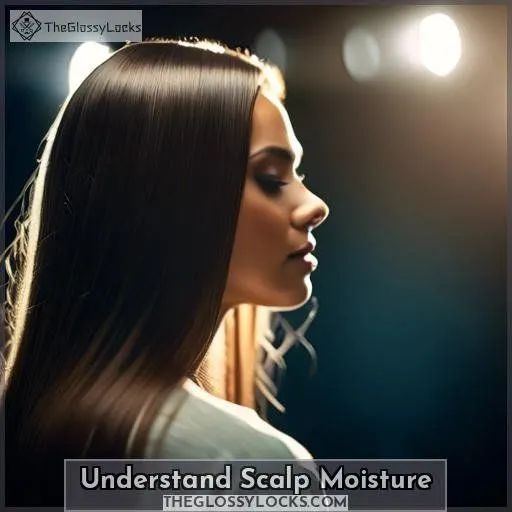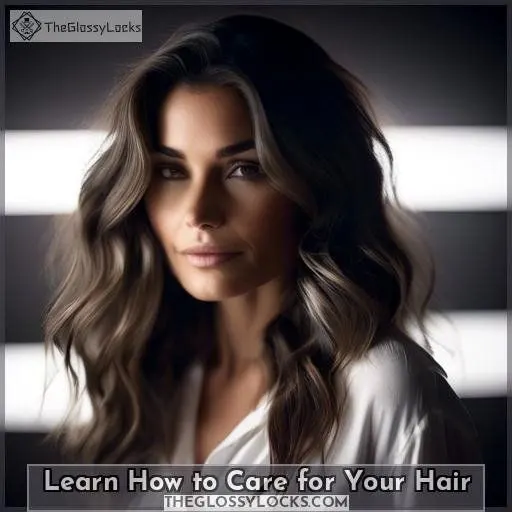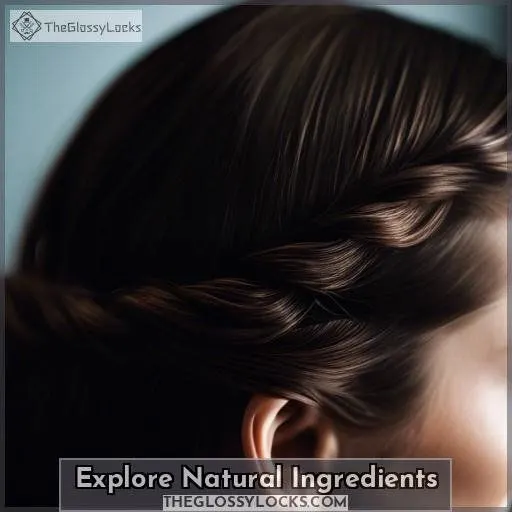This site is supported by our readers. We may earn a commission, at no cost to you, if you purchase through links.

Dive into this comprehensive guide to discover the telltale signs of your hair type, from porosity to scalp health, and learn how to tailor your routine for optimal hair happiness.
Embrace your natural beauty and say goodbye to bad hair days forever.
Table Of Contents
- Key Takeaways
- How to Recognize Your Hair Type ?
- Determine Your Hair Texture
- Identify Your Hair Structure
- Discover Your Hair Porosity
- Understand Scalp Moisture
- Learn How to Care for Your Hair
- Explore Natural Ingredients
- Set Your Hair Goals
- Get Expert Tips and Tricks
- Stay Updated on Hair Innovations
- Personalize Your Hair Care Regimen
- Frequently Asked Questions (FAQs)
- What is the difference between high porosity and low porosity hair?
- How does hair density affect hair care?
- What are the benefits of using natural ingredients in hair care products?
- How often should I wash my hair based on my scalp type?
- Can I use the same hair care products on all parts of my head if I have different curl patterns?
- Conclusion
Key Takeaways
- Straight (Type 1): No curl
- Wavy (Type 2): S-shape
- Curly (Type 3): Spiral curls and ringlets
- Coily (Type 4): Defined ringlets and zigzags
- Thickness: Fine, medium, coarse
- Hold: Fine hair may not hold styles well, medium hair holds shape, thick hair holds curls well
- Texture: Related to curl pattern
- Low porosity: Resists moisture
- Medium porosity: Absorbs products well
- High porosity: Absorbs moisture quickly, loses it easily
- Oily scalp: Requires oil-control treatments
- Dry scalp: Needs moisturizing products
- Dandruff: Caused by oil imbalance
How to Recognize Your Hair Type ?
To recognize your hair type, you should consider factors such as texture, curl pattern, and porosity. Hair texture can be determined by allowing your hair to air dry without products after washing, as straight hair will not curl or bend, wavy hair will have an S shape, and curly hair will have loops or curls.
Curl pattern can also be assessed by examining the hair strand’s shape, with loose curls being type 2a, tighter curls being type 2b, and coily hair being type 4. Hair porosity can be tested by placing a strand in a bowl of water; high porosity hair sinks quickly, low porosity hair floats, and balanced porosity hair sinks slowly.
Determine Your Hair Texture
Determining your hair texture is the first step in understanding your unique hair type. This curl pattern is the foundation of your hair texture. The hair texture chart breaks down the four main hair textures: straight (type 1), wavy (type 2), curly (type 3), and coily (type 4).
Each texture has its own distinct characteristics, from the shape of the curl to the thickness of the strand.
Picture your hair strands – are they straight as an arrow, gently wavy, tightly coiled, or somewhere in between? Knowing your hair texture helps you choose the right products and techniques to keep your locks healthy and happy.
So take a close look – your hair is unique, and understanding its texture is key to unlocking its full potential.
Identify Your Hair Structure
Identifying your hair structure is an essential step in understanding your hair type and creating a personalized hair care regimen. Hair structure refers to the thickness of the strands, which can affect how well your hair holds different hairstyles and reacts with certain hair products.
Thickness: Your hair can fall into three categories: fine, medium, and coarse. Fine hair feels thin between your fingers, medium hair feels noticeable, and coarse hair feels thick.
Hold: Fine hair may not hold hairstyles well, while medium hair is relatively easy to style and holds its shape for a longer period. Thick hair can hold curls very well but may be difficult to style due to its less supple nature and tendency to become frizzy.
Texture: Hair texture is related to the natural shape or pattern of your hair strands. Straight hair has no curl, wavy hair has an S shape, curly hair forms spiral curls and ringlets, and coily hair has defined ringlets and zigzags.
Porosity: Hair porosity refers to your hair’s ability to absorb moisture and product. Low porosity hair takes longer to dry and has difficulty absorbing products, while high porosity hair dries quickly and loses moisture easily. Balanced porosity hair is easy to maintain and absorbs products well.
Understanding your hair structure is crucial for choosing appropriate hair care products and routines, preventing improper hair care, identifying specific hair concerns, and creating a personalized hair care regimen.
Discover Your Hair Porosity
Understanding your hair porosity is crucial for selecting the right hair care products and routines. Porosity refers to the hair’s ability to absorb and retain moisture. There are three main categories: low, medium, and high porosity.
Low porosity hair resists moisture, while high porosity hair quickly absorbs and loses moisture.
To test your hair porosity, you can use the float test, spray test, or strand test. The float test involves placing a clean hair strand in a glass of water. Low porosity hair floats, medium porosity hair sinks slowly, and high porosity hair sinks immediately.
The spray test involves misting a hair strand with water and observing its behavior. Low porosity hair has beads of water that don’t sink in, medium porosity hair absorbs water but not immediately, and high porosity hair absorbs water quickly.
The strand test involves sliding your fingers up a hair strand. If you feel small bumps, you may have high porosity hair, and if the shaft is smooth, you may have low porosity hair.
Caring for low porosity hair involves using products with humectant properties, such as Clever Curl Curl Gel and Dry Weather Clever Curl, as well as moisturizing products with hydrating ingredients. High porosity hair benefits from products that include heavier ingredients like oils or butters to help retain moisture.
Understand Scalp Moisture
Understanding your scalp’s moisture level is like hitting the jackpot for your hair’s well-being.
Think of your scalp as the soil in a garden; it needs just the right amount of rain—not a drought, nor a flood—to make your hair flourish.
If your scalp’s as oily as a slice of pizza, you might be facing a slick situation that calls for an oily scalp treatment. On the flip side, a dry scalp can leave you flaky and itchy, craving those dry scalp solutions.
Dandruff management is a balancing act; too much oil and you’re greasy, too little and you’re a snow globe. So, get to know your scalp type and show it some love with the right hair care, because a happy scalp means happy hair follicles—and that’s your ticket to fabulous locks.
Learn How to Care for Your Hair
To care for your hair, consider the following steps:
Choose appropriate hair masks: Select hair masks that are tailored to your hair type, such as lightweight hydrators for fine hair or rich masks for thick, coarse hair.
Apply scalp treatments: Address scalp issues like dandruff, seborrheic dermatitis, or psoriasis with medicated shampoos or treatments.
Use product recommendations: Follow expert advice on hair products, such as ketoconazole shampoos for dandruff, rosemary oil for hair growth, or Nizoral Anti-Dandruff Shampoo for specific types of hair loss.
Consider hair supplements: Incorporate supplements like Biosil Advanced Collagen Generator Plus to promote healthier hair growth.
Use hair accessories: Protect your hair with accessories like silk scrunchies or silk pillowcases to reduce breakage.
Stay informed: Keep up with hair care innovations and breakthroughs, such as the use of vegan keratin in hair masks to combat frizz.
Explore Natural Ingredients
When it comes to caring for your hair, exploring natural ingredients can unlock the secrets to healthy, vibrant locks. Natural ingredient benefits go beyond the surface, delving into the realm of sustainable sourcing and eco-friendly packaging.
Ingredient combinations tailored towards your hair type can work wonders, whether you have straight, curly, wavy, or coily hair. Dive into the world of hair masks with natural ingredients to unveil the secrets of lush, nourished hair.
Not only are these products designed to enhance your hair’s natural beauty, but they also contribute to a more sustainable approach to hair care.
Set Your Hair Goals
Transitioning from exploring natural ingredients, let’s delve into setting your hair goals. This step is crucial in tailoring your hair care routine to achieve optimal results. When it comes to unlocking the secrets of your hair type, understanding your goals is key.
- Define clear objectives for your hair growth journey.
- Select suitable product recommendations aligned with your hair type.
- Prioritize scalp health to support overall hair health.
- Experiment with different hair styling techniques to find what works best for you.
Setting specific goals not only guides your hair care routine but also empowers you to take charge of your hair’s well-being and appearance.
Get Expert Tips and Tricks
- Embrace DIY hair care: Whip up your own hair masks using kitchen staples. Avocado for moisture, lemon for shine, and a dash of humor for good measure.
- Stay ahead with hair trends: Whether it’s the latest Italian designer haircare product or a simple, chic hair accessory, adding a little flair can transform your look overnight.
- Know thy scalp: Understanding whether you have an oily or dry scalp can be a game-changer. It’s like knowing whether you’re a coffee or tea person – essential for your daily ritual.
Stay Updated on Hair Innovations
When it comes to staying updated on hair innovations, you’re in for a treat! Dive into the ever-evolving world of hair advancements, from breakthrough technologies to the latest trends.
Discover new hair care startups shaking up the industry and innovative apps designed to enhance your hair care routine.
Unveil the secrets of cutting-edge hair care technology that’s not only revolutionizing the realm of hair care but also tailored to meet your specific needs.
Whether you’re seeking more than just basic hair care tips or looking to unlock the secrets of optimal hair health, exploring these robust advancements will empower you on your journey to fabulous locks.
Personalize Your Hair Care Regimen
When it comes to personalizing your hair care regimen, it’s all about tailoring it to your unique hair type.
Understanding your hair type chart is key to addressing specific hair concerns and achieving optimal hair health. By customizing your routine based on your hair appearance, structure, porosity, and scalp moisture, you unlock the secrets to healthy, vibrant hair.
Dive into the world of natural ingredients and expert tips to enhance your routine. Remember, it’s not just about following a generic plan; it’s about creating a bespoke regimen that caters to your hair’s individual needs.
So, embrace the journey of discovering what works best for your locks and enjoy the liberation and power that comes with a well-crafted hair care routine.
Frequently Asked Questions (FAQs)
What is the difference between high porosity and low porosity hair?
High porosity hair drinks up moisture like a sponge but struggles to keep it, leading to dryness. Low porosity hair plays hard to get, resisting moisture but once in, it’s a keeper.
How does hair density affect hair care?
Hair density impacts hair care by determining the amount of product needed and styling techniques. Fine hair requires delicate handling, while coarse hair may need stronger products.
What are the benefits of using natural ingredients in hair care products?
Using natural ingredients in hair care products benefits by nourishing hair, promoting growth, and enhancing scalp health. They combat free radicals, prevent damage, and offer gentle, effective solutions for various hair types and concerns.
How often should I wash my hair based on my scalp type?
Wash oily hair 2-3 times weekly for balance. Thin hair? Start at 4 times, reduce to
Can I use the same hair care products on all parts of my head if I have different curl patterns?
You can’t use the same products on all parts of your head with different curl patterns. Each area needs specific care. Like a garden, nurture each curl type uniquely for the best results.
Conclusion
In the realm of hair care, recognizing your hair type is the key to unlocking the secrets to luscious locks.
By determining your hair texture, identifying your hair structure, discovering your hair porosity, understanding scalp moisture, and learning how to care for your hair, you can tailor your routine for optimal hair happiness.
Embrace your natural beauty and seek more than just a good hair day – strive for a personalized hair care regimen designed to enhance your unique hair type.
It’s not merely about navigating the complexities of hair care, but rather, it’s about embracing the ever-evolving world of hair innovations to craft a bespoke routine that underpins your hair’s everchanging needs.

